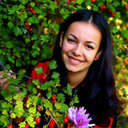Biological and Chemical Insights of Beech (Fagus sylvatica L.) Bark: A Source of Bioactive Compounds with Functional Properties.
Ključne riječi
Sažetak
The present study aimed, on the one hand, to improve the yield of microwave assisted extraction (MAE) of polyphenols from beech bark by using a design of experiments (DoE) approach. On the other hand, beech bark extracts (BBE) were characterized in terms of their phytochemical profile and evaluated for biological potential (antioxidant, antibacterial, antifungal, antimutagen, anti-α-glucosidase, and anti-tyrosinase). The extraction time varies with the amount of extracted total phenolic content (TPC). The microwave power favors TPC extraction but in different proportions. The optimum conditions which gave the highest TPC (76.57 mg GAE/g dry plant material) were reached when the microwave power was 300 W, extraction time was 4 min, and the solvent was an ethanol-water (50:50) mixture. The practical value of TPC after a controlled experiment was 76.49 mg GAE/g plant material. The identified compounds were vanillic acid, gallic acid, epicatechin, catechin, protocatechuic acid, chlorogenic acid, ferulic acid, and isoquercitrin. The antioxidant potential of BBEs was demonstrated by in vitro experiments. The BBEs were active against Staphylococcus aureus, Pseudomonas aeruginosa, Salmonella typhimurium, Escherichia coli, and Candida species. All extracts were antimutagenic and expressed an inhibition on α-glucosidase and tyrosinase activity. Regarding antimutagen activity, the assayed extracts may be considered to have low or no antimutagen effects.


